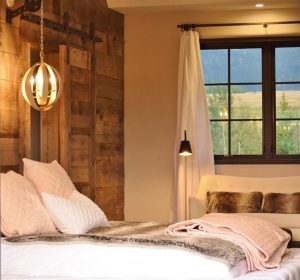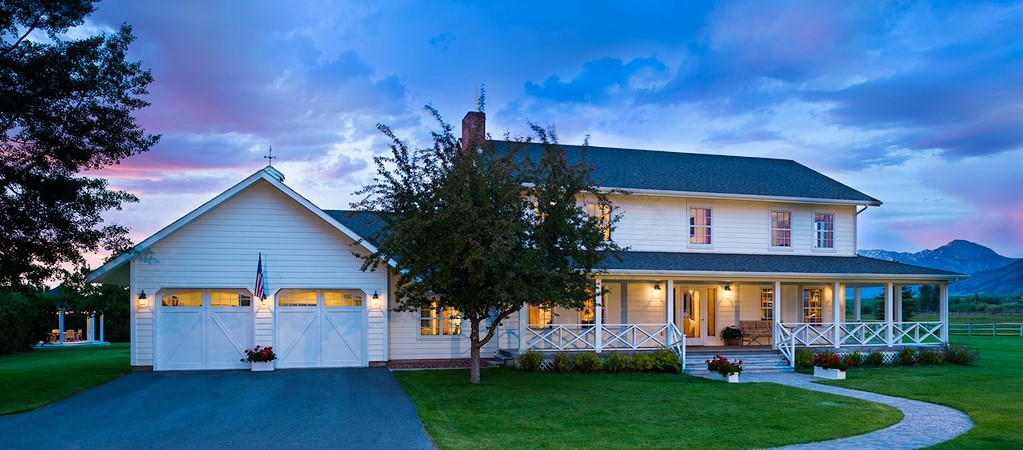Bozeman Homeowner’s Insurance: Bozeman Home Insurance Information For Protecting Residential and Luxury Homes.
Information+ for Insuring Bozeman Homes, Vacation Dwellings, Summer Residences.
Homeowners Insurance is a package policy. This means that it covers both damage to your property and your liability or legal responsibility for any injuries and property damage you or members of your family cause to other people. This includes damage caused by household pets.
Damage caused by most disasters is covered but there are exceptions. The most significant exceptions are damage caused by floods, earthquakes and poor maintenance. You must buy two separate policies for flood and earthquake coverage. Maintenance-related problems are the homeowners’ responsibility.
Homeowner’s Insurance provides financial protection against disasters. A standard policy insures the home itself and the things you keep in it. Please ask me, shop around, or ask trusted friends who they recommend.
 A Standard Homeowner’s Insurance Policy Includes Four Essential Types Of Coverage
A Standard Homeowner’s Insurance Policy Includes Four Essential Types Of Coverage
- Coverage for the structure of your home.
- Coverage for your personal belongings.
- Liability protection.
- Additional living expenses in the event you are temporarily unable to live in your home because of a fire or other insured disaster.
House Structure Coverage
Though policy coverage can vary, generally, this portion of a homeowner’s insurance policy covers physical damage to the insured dwelling, including damage to, for instance, roof, walls, foundation, etc.
Homeowner’s insurance can pay for repairs or re-construction of the dwelling if it’s damaged or destroyed by wind, fire, hail, lightning or some other disaster specifically listed in your policy.
Ensure you are clear about what is and what is not covered, because policies may vary!
Generally, a homeowner’s insurance policy will not pay for damage caused by a flood, earthquake, or basic wear and tear. When purchasing insurance for the home’s structure, seriously consider purchasing enough insurance coverage to rebuild the home.
Generally, standard homeowner policies also cover detached structures like garages, playhouses, sheds, etc. (Check your policy before signing!)
Coverage for these structures can often be as little as 10% of the total amount of insurance taken out on the house. If you believe you need greater coverage, speak with an agent.
Personal Belongings Coverage
Personal items are covered if they are stolen or destroyed by fire, hurricane or other insured disaster. Personal items include clothes, bicycles, furniture, etc. Most companies provide coverage for 50 to 70% of the amount of insurance you have on the home.
So if you have $100,000 worth of insurance on the structure of your home, you would have between $50,000 to $70,000 worth of coverage for your belongings. The best way to determine if this is enough coverage is to conduct a home inventory.
This part of your policy includes off-premises coverage. This means that your belongings are covered anywhere in the world, unless you have decided against off-premises coverage. Some companies limit the amount to 10% of the amount of insurance you have for your possessions.
You may have up to $500 of coverage for unauthorized use of your credit cards.
Expensive items like jewelry, furs and silverware are covered, but there are usually dollar limits if they are stolen. Generally, you are covered for between $1,000 to $2,000 for all of your jewelry and furs.
To insure these items to their full value, purchase a special personal property endorsement or floater and insure the item for their appraised value. Coverage includes “accidental disappearance,” meaning coverage if you simply lose that item. And there is no deductible.
Trees, plants and shrubs are also covered under standard homeowners insurance. Generally you are covered for 5% of the insurance on the house—up to about $500 per item. Perils covered are theft, fire, lightning, explosion, vandalism, riot and even falling aircraft. They are not covered for damage by wind or disease.
Liability Coverage
Liability covers you against lawsuits for bodily injury or property damage that you or family members cause to other people. It also pays for damage caused by your pets. So, if your son, daughter or dog accidentally ruins your neighbor’s expensive rug, you are covered. However, if they destroy your rug, you are not covered.
The liability portion of your policy pays for both the cost of defending you in court and any court awards—up to the limit of your policy. You are also covered not just in your home, but anywhere in the world.
Liability limits generally start at about $100,000. However, experts recommend that you purchase at least $300,000 worth of protection. Some people feel more comfortable with even more coverage. You can purchase an umbrella or excess liability policy which provides broader coverage, including claims against you for libel and slander, as well as higher liability limits. Generally, umbrella policies cost from $200 to $350 for $1 million of additional liability protection.
Your policy also provides no-fault medical coverage. In the event a friend or neighbor is injured in your home, he or she can simply submit medical bills to your insurance company. This way, expenses are paid without a liability claim being filed against you. You can generally get $1,000 to $5,000 worth of this coverage. It does not, however, pay the medical bills for your family or your pet.
Additional Living Expense Coverage
This pays the additional costs of living away from home if you can’t live there due to damage from a fire, storm or other insured disaster. It covers hotel bills, restaurant meals and other living expenses incurred while your home is being rebuilt. Coverage for additional living expenses differs from company to company. Many policies provide coverage for about 20% of the insurance on your house. You can increase this coverage, however, for an additional premium.
Some companies sell a policy that provides an unlimited amount of loss-of-use coverage, but for a limited amount of time. If you rent out part of your house, this coverage also reimburses you for the rent that you would have collected from your tenant if your home had not been destroyed.
Earthquake Insurance Policies: Seriously consider one of these, especially in known earthquake areas, but, remember, earthquakes can occur anywhere. A home owner would have a different policy than would a renter. Earthquake policies have a higher deductible than do basic policies and can differ on the amount of coverage.
There are different types of homeowner policies. Homeowners policies are fairly standard across the US, but each state and each company may offer policies that differ from others or their policies my have titles other than the generic “basic,” “broad,” “special,” “modified,” etc.
What Is In A Standard Homeowner’s Insurance Policy?
If you own the house you live in, you have several policies from which to choose. But, for the most part, the HO-3 is the most popular homeowner’s policy, providing coverage for the greatest number of disasters.
Owners of multi-family houses more often than not purchase an HO-3 AND an endorsement to cover risks associated with having renters living in their house.
Research specific information about types* of disasters covered by homeowner policies
HO-1: Limited coverage policy
This basic policy covers you against 10 disasters. An HO-1 policy may not be available in many states.
HO-2: Basic policy
An HO-2 policy is a broad policy that provides dwelling protection for 16 disasters. An HO-2 policy is also available for mobile homes.
HO-3: The most popular policy
This special policy covers your home from 17 disasters, except perils specifically excluded.
Other Policies:
HO-4 Policy: Renter’s Coverage
HO-5 Policy: Open-Perils Basis Coverage
HO-6 Policy: Coverage for Condos
HO-7 Policy: Additional, Extended Coverage on a Dwelling
HO-8 Policy: Modified Coverage: Generally, for Older Houses
*Disasters not generally covered by homeowner’s insurance: earthquakes, floods, lack of maintenance on the homeowner’s part, and backup of the house’s sewer system.
+Thanks to the Insurance Information Institute for much of this information.


